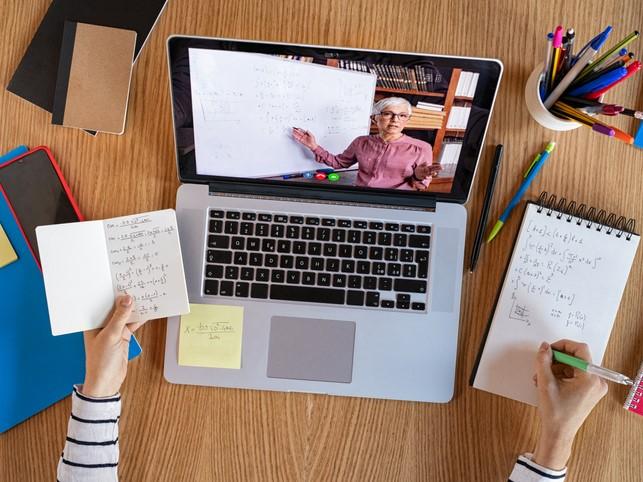Vicarious experiences (VE) gained through the observation of others are easily accessible in the traditional classroom or work-integrated learning environments. At the root of VE is not only observation but also the opportunity to evaluate and internalise the outcomes associated with a task being observed. While health programmes are likely the most familiar context, VE is used increasingly across higher education settings, in disciplines from mathematics and engineering to education and business.
Traditional in-person VE has typically centred on students observing each other as they perform tasks within a classroom setting or watching a professional find a solution to a problem in a workplace setting. Online VE often uses video of skills or tasks being performed with or without feedback from an instructor.
- Boosting student engagement in an online learning environment
- How to build awareness of cultural sensitivity in healthcare curricula
- Interactive learning: more than teamwork makes the dream work
Although providing VE through playing a video may seem simple, teachers need to be intentional around how the VE is designed to harness the benefits of this valuable social approach to learning.
Here are five questions to consider when you are planning VE for an online setting:
1. Can my students relate to those being observed?
Effective VE is not simply observing. Learners must also be able to relate psychologically to the person being observed and thus participate at both a cognitive and affective level. When designing online VE, try to feature a person or people who your learners can actively relate to – for example, a learner with the same skill set, a recent learner (advanced skill set) or a member of the target profession (expert skill set). Outline why this person was selected for the observation. This allows students to understand the relevance to their own learning journey and to reflect on how their skills may contrast with those observed.
2. Am I drawing attention to the real-world outcomes?
By focusing on the relevance of a task, VE actively engages and motivates students and may also contribute to the social dimensions of their learning, such as building professional identity. Teachers should therefore design VE to feature the complete experience of a task – from initial choice of task through to the real-world outcomes – as well as observing the task itself. But don’t be tempted to ask students to sit through one long, onerous observation. To aid collaboration among learners, break up long observations into parts. Ask students to describe their reasoning process when selecting a task before observing the task itself. During the observation, one or more instructors can also use a “pause and discuss” model to draw students’ attention to key parts of the task or to the outcomes expected.
3. Can I encourage students to be critical observers?
Online VE activities should include opportunities for students to evaluate the “success” of the task observed. In asynchronous activities, mix observation and evaluation; ask students to develop and submit the feedback that they would give to the person being observed. In synchronous activities, students can actively share their evaluations with other learners through shared documents or discussions. In breakout spaces, smaller groups can be tasked with observing and evaluating before rejoining the larger group to share their evaluations or feedback.
4. Can I use dialogue?
Dialogue, in the form of voice-overs, can add extra meaning to a task. Monologues, alongside the online observation, can allow the person being observed to explain the steps of a task they are undertaking; this could also be provided by an instructor. Voice-overs can be added to a video through simple programs such as YouTube or Zoom, or you may choose to commentate for students in real time. To take voice-overs one step further, have the learner provide the monologue of what they are observing.
Small online groups can observe the same video synchronously, or independently if asynchronous, with the opportunity to submit their own voice-overs for instructor or peer feedback and assessment. Research has shown that observing a dialogue between an instructor and a student can be even more effective for learning than monologues, and watching someone receive feedback can be powerful. Consider featuring not just the person in the observation but also someone performing a task and an instructor who provides feedback. Your students can then observe and reflect on both the task observed and the feedback provided.
5. Am I focusing on the subtle and intangible outcomes?
Many skills and tasks that students benefit from observing have both tangible and intangible outcomes. For example, where students observe a clinician-patient interview (task), students may identify both the information gathered by the clinician (tangible outcome) and the development of a therapeutic relationship between clinician and patient (intangible outcome). Where outcomes of tasks being observed may be subtle or even intangible, you can ask students or groups to identify underlying benefits that are realised when that task is completed successfully. This gives learners a valuable insight into what they can expect when they step out of the virtual classroom and into the real world.
We may lose our more simple, incidental and natural opportunities for VE when we are out of our traditional settings and in an online space. Creating synchronous or asynchronous VE early, often and intentionally in a programme of learning can provide an opportunity to foster both the skill and the will of our learners.
Roma Forbes is a senior lecturer in physiotherapy in the School of Health and Rehabilitation Sciences at the University of Queensland.
If you found this interesting and want advice and insight from academics and university staff delivered direct to your inbox each week, sign up for the THE Campus newsletter.




comment